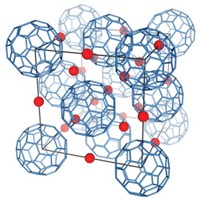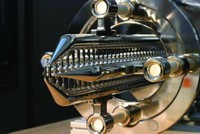Advertisement
Grab your lab coat. Let's get started
Welcome!
Welcome!
Create an account below to get 6 C&EN articles per month, receive newsletters and more - all free.
It seems this is your first time logging in online. Please enter the following information to continue.
As an ACS member you automatically get access to this site. All we need is few more details to create your reading experience.
Not you? Sign in with a different account.
Not you? Sign in with a different account.
ERROR 1
ERROR 1
ERROR 2
ERROR 2
ERROR 2
ERROR 2
ERROR 2
Password and Confirm password must match.
If you have an ACS member number, please enter it here so we can link this account to your membership. (optional)
ERROR 2
ACS values your privacy. By submitting your information, you are gaining access to C&EN and subscribing to our weekly newsletter. We use the information you provide to make your reading experience better, and we will never sell your data to third party members.
Physical Chemistry
Atomic stopwatch measures tunneling time
New experiment tries to answer oft-debated quantum question, but some physicists still wonder if the answer is meaningful
by Sam Lemonick
July 27, 2020
Quantum tunneling is the spooky phenomenon by which particles can cross through barriers that shouldn’t be surmountable. And it’s more than a textbook curiosity—photosynthesis relies on tunneling, as does nuclear fusion in the sun.
The effect is well known but many details remain mysterious. For decades, physicists have been arguing about how long it takes a particle to tunnel through a barrier. Now researchers have timed rubidium atoms tunneling and found that their quantum trips take about a millisecond (Nature 2020, DOI: 10.1038/s41586-020-2490-7). But while some physicists have praised the experiment’s rigor, others say the concept of “time” might not be quite as meaningful in this quantum realm as it is in the world at large.

A team led by Ramón Ramos, at the time at the University of Toronto and now at the Institute of Photonic Sciences, and Aephraim M. Steinberg at the University of Toronto and the Canadian Institute for Advanced Research, clocked the rubidium atoms based on a classic thought experiment called a Larmor clock. In the thought experiment, physicists imagined putting an insurmountable barrier in a magnetic field and then watching particles pass through it. Magnetic fields change the angle of a particle’s spin, so measuring the change in spin on the other side of the barrier should indicate how long the particles spent inside the magnetic field, and as a result how long they tunneled for.
In the group’s real-world experiment, they trapped rubidium atoms—which behave like quantum particles at 2 billionths of a Kelvin above absolute zero—inside a laser beam. A second, 1 μm-thick beam then intersected the first. The scientists tuned this second beam so it would repel the atoms to create the insurmountable barrier, while also acting like a magnetic field. Just a few hundred of the atoms tunneled through the barrier beam. Based on spin measurements, the slowest moving atoms spent about 0.6 ms inside the barrier.
The experiments are “the most elegant and convincing practical application of the ‘Larmor clock’ concept to quantum tunneling,” quantum physicist Igor Litvinyuk of Griffith University, who was not involved in the research, wrote in an email. But, he added, “I am less convinced that ‘time spent by a quantum object within the barrier region’ is an entirely meaningful concept representing any objective reality.”
Litvinyuk points out that deriving that time from the change in spin angle relies on several mathematical assumptions, and those assumptions can be questioned. Steinberg agrees, noting that all quantum mechanics are abstract math, which makes connecting them to phenomena in the macroscopic world difficult.
But Elena Akhmatskaya at the Basque Center for Applied Mathematics and Dmitri Sokolovski at the University of the Basque Country take their critique of the experiment further. In a joint statement emailed to C&EN, they argue that the uncertainty principle— which explains that it’s not possible to measure a particle’s position and momentum simultaneously —means an atom tunneling through a barrier takes more than one path concurrently. The result, they wrote, is that there is no single duration spent within the barrier. When physicists construct quantum clocks like Ramos and Steinberg’s, they “cannot use the result to deduce ‘the time spent by a tunneling atom within the barrier region,’” the two wrote. “Such time simply does not exist or, if you prefer, cannot be defined.”
Litvinyuk doesn’t expect a satisfying resolution to these arguments. “It is a defining feature of this whole ‘tunneling time’ debate that nobody can clearly define the very subject of the debate,” he wrote. But he thinks these discussions often lead to new or deeper understanding of quantum phenomena.




Join the conversation
Contact the reporter
Submit a Letter to the Editor for publication
Engage with us on Twitter